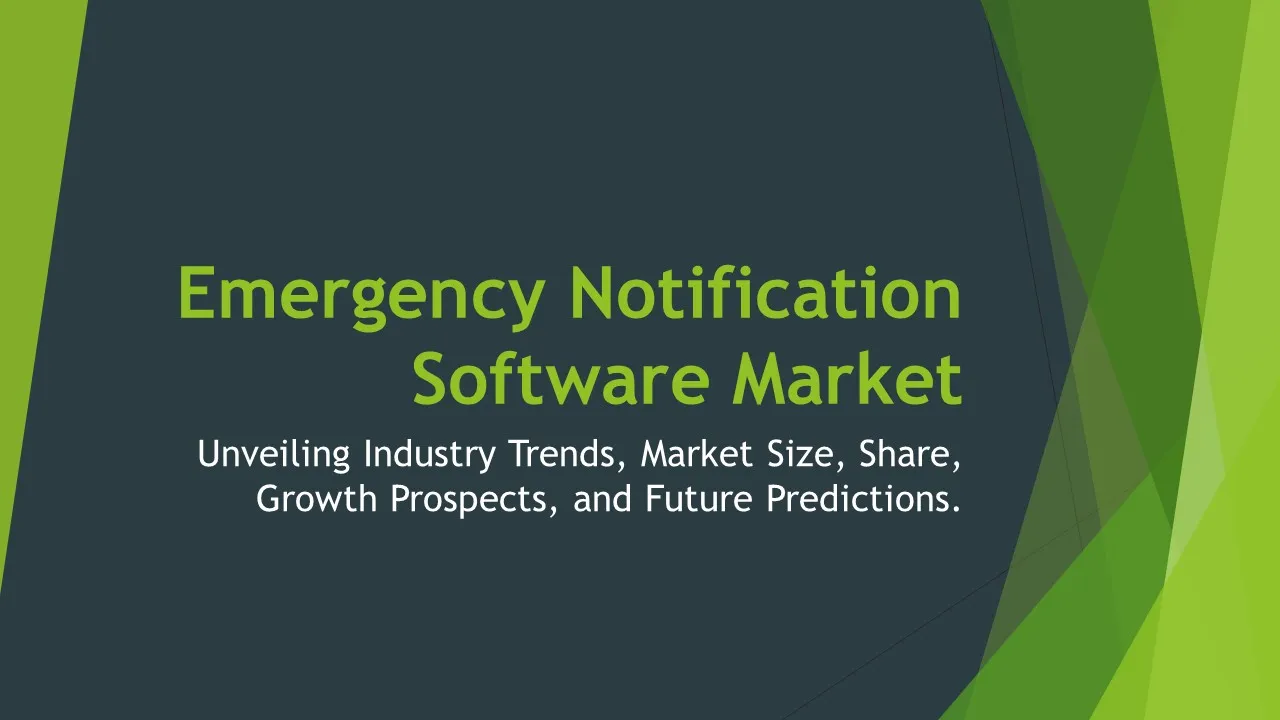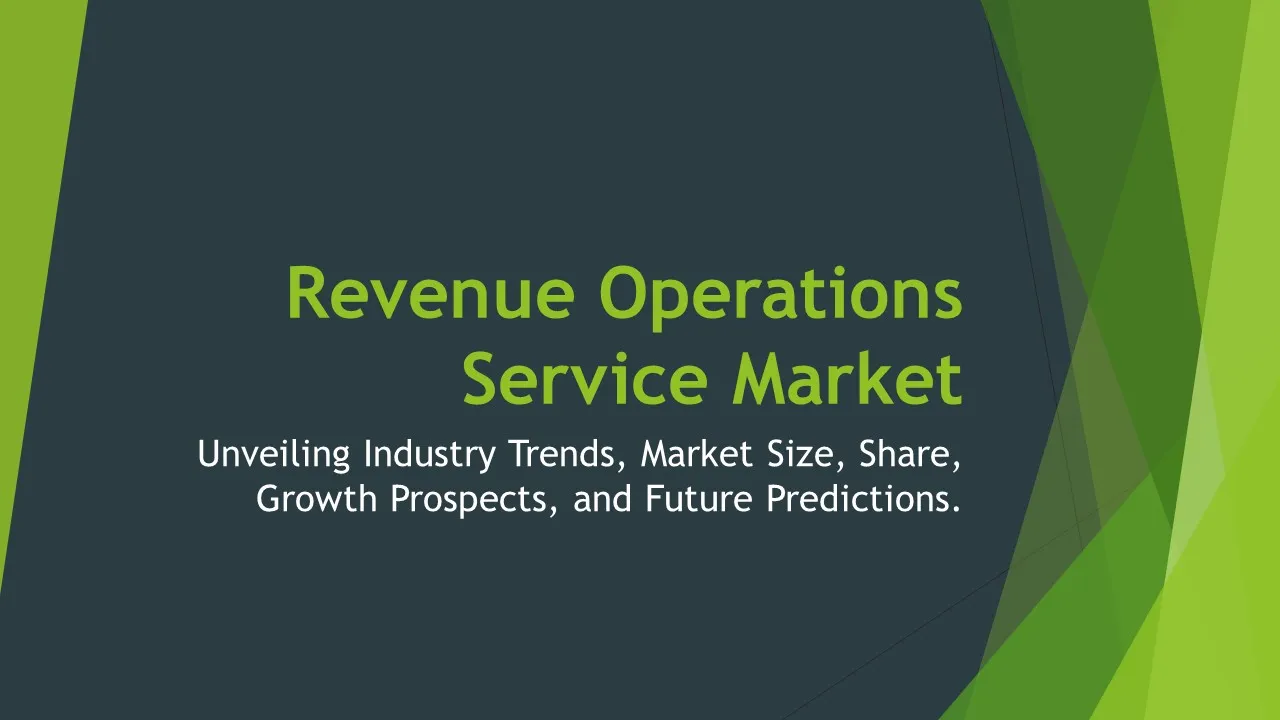Alternative Data Solution
Alternative Data Solution Market Segments - by Data Type (Web Data, Social Media Data, Satellite Data, IoT Data, Financial Data), Industry Vertical (Finance, Retail, Healthcare, Technology, Transportation), End-User (Enterprises, SMEs, Government Agencies, Research Institutes, Non-profit Organizations), Delivery Model (API, Cloud-based, On-premises, Hybrid), and Region (North America, Europe, Asia Pacific, Latin America, Middle East & Africa) - Global Industry Analysis, Growth, Share, Size, Trends, and Forecast 2025-2035
- Report Preview
- Table Of Content
- Segments
- Methodology
Alternative Data Solution Market Outlook
The global alternative data solution market is projected to reach USD 8.2 billion by 2035, expanding at a compound annual growth rate (CAGR) of 24.5% during the forecast period from 2025 to 2035. This growth can primarily be attributed to the rising demand for advanced analytics and data-driven decision-making across various industries. The increasing volume of data generated from diverse sources, coupled with the need for organizations to gain competitive intelligence, has led to the adoption of alternative data solutions. Additionally, factors such as the proliferation of IoT devices, advancements in machine learning algorithms for data processing and analysis, and growing awareness of data monetization strategies are expected to significantly contribute to the expansion of the market. As businesses recognize the value of alternative data in enhancing their operational efficiency and customer engagement, the demand for these solutions is anticipated to escalate.
Growth Factor of the Market
The alternative data solution market is witnessing robust growth driven by several key factors. Firstly, the digital transformation across industries has led to an explosion of data generation, creating a pressing need for organizations to harness alternative data sources for improved decision-making processes. Businesses are increasingly leveraging alternative data to gain insights into market trends, consumer behavior, and competitor analysis, which enhances their strategic positioning. Secondly, the adoption of advanced technologies like artificial intelligence and machine learning has made it feasible to analyze vast datasets in real-time, further driving the demand for alternative data solutions. Additionally, the integration of alternative data with traditional data sources provides a comprehensive view that aids in predictive analytics and risk management. Moreover, the growing emphasis on personalization in customer engagement strategies necessitates the use of alternative data to tailor offerings to specific demographics. Finally, the increasing investment in data infrastructure and analytics capabilities by organizations underscores the significant potential for growth within this market.
Key Highlights of the Market
- The market is expected to reach USD 8.2 billion by 2035 with a CAGR of 24.5% between 2025 and 2035.
- Technological advancements in AI and machine learning are enhancing data processing capabilities.
- Growing demand for real-time analytics is driving the adoption of alternative data solutions.
- Increasing focus on data-driven decision-making across industries is propelling market growth.
- The proliferation of IoT devices is significantly contributing to the volume of alternative data.
By Data Type
Web Data:
Web data is one of the most significant segments within the alternative data solution market. This data type encompasses information extracted from websites, including product prices, customer reviews, and trends gleaned from digital footprints. The utilization of web data enables businesses to track competitors, understand market dynamics, and optimize pricing strategies effectively. As e-commerce continues to expand, the reliance on web data for customer insights and market analysis is increasingly becoming essential for companies aiming to maintain a competitive edge. Furthermore, web scraping technologies have improved significantly, facilitating the extraction of large amounts of data quickly and efficiently, thus propelling the growth of this segment.
Social Media Data:
Social media data is another critical component of the alternative data landscape. It includes user-generated content from platforms such as Facebook, Twitter, and Instagram, which provides valuable insights into consumer sentiment, brand perception, and trending topics. Companies are leveraging this data to enhance their marketing strategies, develop targeted campaigns, and monitor brand health in real-time. Additionally, the increasing usage of social media for customer engagement and feedback collection has made this data type indispensable for organizations looking to improve customer experience and loyalty. The ability to analyze social media trends and audience interactions allows businesses to pivot their strategies quickly, making social media data a powerful asset in modern business operations.
Satellite Data:
Satellite data is emerging as a transformative source of alternative data, particularly in sectors such as agriculture, real estate, and logistics. This data type involves the use of satellite imagery and geospatial data to assess land use, monitor environmental changes, and optimize supply chain logistics. For instance, agricultural companies can utilize satellite data to make informed decisions regarding crop yields, while real estate developers can analyze land viability. The increasing availability of high-resolution satellite imagery and advancements in data analytics capabilities are driving the growth of this segment, making satellite data a valuable tool for organizations seeking to leverage geospatial insights for strategic decision-making.
IoT Data:
IoT data is rapidly becoming a crucial aspect of alternative data solutions as the Internet of Things continues to gain traction across various industries. This data type comprises information collected from connected devices, sensors, and smart appliances, which provide real-time insights into operational efficiency, consumer behavior, and environmental conditions. Companies are using IoT data to enhance product development, optimize supply chain management, and improve customer service. The proliferation of IoT devices in sectors such as manufacturing, healthcare, and transportation is leading to an exponential increase in data availability, which in turn is fueling the demand for IoT-based alternative data solutions. As organizations strive for greater operational visibility and efficiency, IoT data plays a pivotal role in achieving these objectives.
Financial Data:
Financial data remains a fundamental segment of the alternative data solution market, encompassing a wide range of information such as stock prices, trading volumes, and economic indicators. This data type is particularly valuable for investment firms, hedge funds, and financial analysts who require timely and accurate information to make informed trading decisions. The integration of alternative financial data with traditional financial metrics offers a more comprehensive view of market conditions and investment opportunities. As the financial sector increasingly embraces data-driven strategies, the demand for alternative financial data solutions continues to escalate, further propelling growth in this segment. Additionally, the rise of fintech companies and algorithmic trading necessitates a deeper analysis of financial data, paving the way for innovative solutions in this space.
By Industry Vertical
Finance:
The finance industry is one of the primary adopters of alternative data solutions, leveraging vast amounts of information for investment strategies, risk assessment, and market analysis. Financial institutions utilize alternative data to gain insights into market trends, assess creditworthiness, and enhance customer engagement. The integration of alternative data sources has proven essential in improving predictive models and investment research, allowing firms to make data-driven decisions that yield higher returns. Moreover, the growing reliance on algorithmic trading and quantitative analysis in the finance sector underscores the importance of alternative data in shaping financial outcomes. As the landscape becomes increasingly competitive, financial companies are expected to invest more in alternative data solutions to maintain an edge over their rivals.
Retail:
The retail industry is increasingly harnessing alternative data solutions to enhance inventory management, customer experience, and marketing effectiveness. By analyzing consumer behavior through various data sources, retailers can gain insights into shopping patterns, preferences, and trends, allowing them to tailor their offerings accordingly. The utilization of web data, social media analytics, and IoT data facilitates improved demand forecasting and personalized marketing strategies. Additionally, alternative data enables retailers to monitor competitor pricing and promotions, optimizing their pricing strategies in real-time. The growing focus on e-commerce further amplifies the importance of alternative data in understanding customer behavior and making informed business decisions, indicating continued growth in this sector.
Healthcare:
In the healthcare sector, alternative data solutions are becoming increasingly relevant in enhancing patient outcomes, optimizing operational efficiencies, and improving research capabilities. Healthcare providers are leveraging alternative data to analyze patient demographics, treatment effectiveness, and resource utilization. By integrating data from various sources, such as wearables, patient surveys, and social media, healthcare professionals can gain comprehensive insights into patient needs and behaviors. This data-driven approach facilitates personalized treatment plans, improves service delivery, and enhances overall patient satisfaction. Moreover, pharmaceutical companies are utilizing alternative data to conduct market research, assess drug viability, and optimize clinical trials, signifying the growing importance of alternative data in healthcare innovation.
Technology:
The technology industry is at the forefront of adopting alternative data solutions, utilizing vast datasets to drive innovation, enhance product development, and improve customer engagement. Companies in this sector leverage alternative data to assess market potential, identify emerging trends, and refine their offerings to meet consumer demands. By harnessing data from web analytics, social media interactions, and user feedback, technology firms can make informed decisions regarding product launches and enhancements. Furthermore, the growing emphasis on data privacy and security is prompting technology companies to invest in alternative data solutions that uphold ethical standards while maximizing data utility. As technology continues to evolve, the reliance on alternative data solutions is set to increase, driving further growth in this industry vertical.
Transportation:
The transportation industry is increasingly adopting alternative data solutions to improve logistics, optimize routes, and enhance overall operational efficiency. Companies in this sector utilize IoT data, satellite imagery, and traffic patterns to manage fleets effectively and ensure timely deliveries. By analyzing real-time data, transportation companies can make informed decisions that reduce costs, improve service levels, and enhance customer satisfaction. Additionally, alternative data allows for better route planning and risk management, contributing to increased safety and reliability in transportation operations. As the industry embraces digital transformation and autonomous technologies, the demand for alternative data solutions in transportation is expected to grow significantly, reshaping the way logistics are managed.
By User
Enterprises:
Large enterprises are among the main users of alternative data solutions, utilizing these insights to enhance decision-making processes and drive business strategies. By integrating alternative data into their operations, companies can gain a competitive edge, improve efficiency, and optimize resource allocation. Enterprises leverage vast datasets to analyze market trends, customer preferences, and competitor activities, enabling them to make informed strategic decisions. The complexity and scale of data generated necessitate advanced analytics capabilities, which many enterprises are now investing in. As organizations seek to become more agile and responsive to market changes, the utilization of alternative data solutions is expected to become increasingly prevalent among large enterprises.
SMEs:
Small and medium enterprises (SMEs) are also recognizing the value of alternative data solutions in enhancing their business capabilities. These organizations are leveraging alternative data to gain insights into market dynamics, customer behavior, and competitive strategies, which can significantly impact their growth and sustainability. While SMEs may have limited resources compared to larger enterprises, advancements in technology have made alternative data solutions more accessible and affordable. By utilizing alternative data, SMEs can enhance their marketing strategies, improve customer service, and make data-driven decisions that drive growth. As the importance of data-driven strategies continues to rise, SMEs are expected to increasingly adopt alternative data solutions to compete more effectively in their respective markets.
Government Agencies:
Government agencies are utilizing alternative data solutions for various purposes, including policy-making, resource allocation, and public service improvement. By analyzing alternative data, government entities can gain insights into public sentiment, social trends, and economic conditions, which ultimately informs their decisions and strategies. This can lead to more effective governance, better resource management, and enhanced public engagement. Additionally, alternative data can assist in disaster response, urban planning, and infrastructure development, enabling government agencies to respond proactively to societal needs. As data-driven governance becomes more prevalent, the demand for alternative data solutions among government agencies is expected to grow.
Research Institutes:
Research institutes are increasingly adopting alternative data solutions to enhance their research capabilities and drive innovation. By leveraging diverse data sources, these institutions can gain deeper insights into complex phenomena and conduct more comprehensive studies. Alternative data solutions facilitate the analysis of large datasets, enabling researchers to identify patterns, correlations, and trends that may not be evident through traditional research methods. Moreover, the integration of alternative data can enhance the quality of research outcomes and contribute to evidence-based policy recommendations. As research continues to evolve in an increasingly data-rich environment, the relevance and application of alternative data solutions within research institutes are likely to expand significantly.
Non-profit Organizations:
Non-profit organizations are also recognizing the potential of alternative data solutions to enhance their operations, improve advocacy efforts, and drive social impact. By analyzing alternative data, non-profits can gain insights into community needs, measure the effectiveness of their programs, and allocate resources more efficiently. This data-driven approach enables organizations to tailor their initiatives to better serve their target populations and achieve desired outcomes. Furthermore, alternative data can assist non-profits in identifying funding opportunities and measuring their impact, which is crucial for securing grants and attracting donations. As the emphasis on transparency and accountability grows, the adoption of alternative data solutions among non-profit organizations is expected to increase.
By Delivery Model
API:
The API delivery model is gaining traction as organizations increasingly seek real-time access to alternative data. APIs enable seamless integration of alternative data sources into existing systems and workflows, facilitating efficient data retrieval and processing. Businesses can leverage APIs to access diverse datasets from various providers, allowing for enhanced decision-making and analytics capabilities. Moreover, the API model supports scalability, enabling organizations to adjust their data consumption based on changing requirements. As companies prioritize agility and responsiveness in their operations, the adoption of API-based alternative data solutions is expected to continue growing, driving market expansion.
Cloud-based:
Cloud-based delivery models have revolutionized the way organizations access and manage alternative data solutions. The flexibility, scalability, and cost-effectiveness offered by cloud solutions are driving their widespread adoption. With cloud-based alternatives, organizations can store vast amounts of data without the need for extensive on-premises infrastructure, enabling them to analyze and process data efficiently. Furthermore, cloud solutions facilitate collaboration and data sharing across departments, enhancing organizational efficiency. As businesses increasingly embrace cloud technology for improved data management and analytics, the demand for cloud-based alternative data solutions is anticipated to rise significantly.
On-premises:
On-premises delivery models continue to be relevant for organizations that prioritize data security and compliance. By keeping alternative data solutions on-site, companies can maintain full control over their data and ensure adherence to regulatory requirements. This model is particularly favored by industries that handle sensitive information, such as finance and healthcare, where data privacy is paramount. While on-premises solutions may involve higher upfront costs and require extensive IT resources, they offer organizations the benefit of customizable configurations tailored to specific needs. As organizations assess their data strategies, the on-premises delivery model is expected to remain a viable option for many.
Hybrid:
The hybrid delivery model combines the benefits of both cloud-based and on-premises solutions, offering organizations flexibility and versatility in managing alternative data. This model allows businesses to retain sensitive data on-site while leveraging cloud resources for scalability and advanced analytics capabilities. Hybrid solutions enable organizations to optimize their data strategies by seamlessly integrating various data sources and ensuring compliance with industry regulations. As organizations seek to balance data security with the need for real-time insights, the hybrid delivery model is gaining traction and is anticipated to play a significant role in the alternative data solution market.
By Region
The alternative data solution market is experiencing robust growth across various regions, with North America holding the largest market share due to the presence of leading technology providers and a strong emphasis on data-driven decision-making. The North American market is expected to grow at a CAGR of approximately 25% during the forecast period, driven by the increasing adoption of advanced analytics and alternative data solutions across various industries. The region's well-established financial sector, coupled with the growing demand for innovative data solutions, is further propelling market expansion. As organizations in North America recognize the value of alternative data in enhancing their competitiveness and operational efficiency, the demand for these solutions is expected to continue rising.
In Europe, the alternative data solution market is also witnessing significant growth, fueled by the increasing emphasis on data privacy regulations and compliance. European organizations are increasingly adopting alternative data solutions to enhance their marketing strategies, customer engagement, and operational efficiencies. The region is projected to grow at a CAGR of around 22% during the forecast period, as businesses leverage alternative data to gain insights into consumer behavior and market trends. Additionally, the proliferation of digital technologies and increasing investment in data analytics capabilities are contributing to the growth of the alternative data solution market in Europe, making it a key player in the industry.
Opportunities
The alternative data solution market presents numerous opportunities for growth and innovation as organizations increasingly recognize the value of data in driving strategic decision-making. One of the key opportunities lies in the development of advanced analytics tools that can process and analyze vast amounts of alternative data quickly and accurately. Companies can capitalize on this opportunity by investing in machine learning and artificial intelligence technologies to enhance their data analytics capabilities. By offering sophisticated algorithms and predictive models, businesses can provide clients with actionable insights that drive their decision-making processes. Moreover, the growing demand for real-time analytics presents a significant opportunity for solution providers to develop platforms that facilitate instant access to alternative data, enabling organizations to respond rapidly to market changes and consumer trends.
Additionally, the expansion of IoT devices and the increasing volume of data generated from these devices create tremendous opportunities for alternative data solutions providers. As more industries adopt IoT technology, the need for analytics solutions that can effectively process and derive insights from this data will grow. Businesses that position themselves to offer comprehensive IoT data analytics solutions are likely to thrive in this evolving market landscape. Furthermore, as organizations increasingly shift toward data-driven decision-making, there is an opportunity for alternative data solution providers to collaborate with businesses across various sectors, offering customized solutions that align with specific industry needs and challenges. By leveraging strategic partnerships and collaborations, companies can enhance their market presence and tap into new revenue streams.
Threats
Despite the promising growth prospects, the alternative data solution market faces several threats that could hinder its expansion. One significant threat is the growing concern surrounding data privacy and compliance with regulatory frameworks such as GDPR and CCPA. As organizations increasingly rely on alternative data, they must navigate complex legal landscapes to ensure adherence to data protection regulations. Non-compliance can result in severe penalties and reputational damage, which may deter businesses from adopting alternative data solutions. Moreover, the evolving nature of data privacy laws means that organizations must continually adapt their strategies to remain compliant, which can be resource-intensive and challenging.
Another critical threat is the potential for data quality issues, as the value of alternative data is highly dependent on its accuracy and reliability. Organizations that utilize poor-quality data may face detrimental consequences, including suboptimal decision-making and reputational harm. The proliferation of alternative data sources also raises concerns about data credibility and verification, making it imperative for businesses to implement robust data validation processes. Additionally, the increasing sophistication of data analytics tools may lead to a competitive landscape where organizations struggle to differentiate their offerings. As technology advances, maintaining a competitive edge while addressing data quality and privacy concerns will be crucial for organizations operating within the alternative data solution market.
Competitor Outlook
- AlphaSense
- Quandl (NASDAQ: MDRX)
- YipitData
- Thomson Reuters
- Sentieo
- Dataminr
- Predata
- FactSet Research Systems
- Simfin
- StreetLight Data
- RBC Capital Markets
- M Science
- Second Measure
- Tracxn Technologies
- Zyte
The competitive landscape of the alternative data solution market is characterized by the presence of several key players and a diverse range of offerings. Companies such as AlphaSense and YipitData have established themselves as leaders in providing alternative data solutions, specializing in unique data sets and advanced analytics capabilities. AlphaSense, for example, focuses on delivering comprehensive data insights from unstructured content, enabling clients to make informed decisions based on market intelligence. Similarly, YipitData offers analytics services by aggregating and analyzing alternative data sources, catering primarily to the finance and investment sectors. As competition intensifies, these companies are continually innovating and expanding their service portfolios to meet the evolving needs of their clients.
Additionally, established financial data providers like Thomson Reuters and FactSet Research Systems are also investing in alternative data solutions to enhance their offerings. These companies incorporate alternative data into their traditional financial analytics platforms, providing clients with a holistic view of market dynamics. Their extensive experience and credibility in the financial sector position them well to capture a significant portion of the alternative data market. Furthermore, emerging players such as M Science and Second Measure are gaining traction by offering specialized insights derived from consumer behavior and transaction data, indicating a shift towards more niche-focused solutions within the market.
As the market continues to evolve, collaboration between alternative data providers and technology companies is expected to play a pivotal role in driving innovation. Partnerships that leverage advanced analytics, machine learning, and data visualization tools can enhance the value propositions of alternative data solutions. Companies that prioritize building strong alliances and integrating cutting-edge technologies into their offerings are likely to gain a competitive advantage. Overall, the alternative data solution market is poised for significant growth, fueled by ongoing technological advancements and increasing demand for data-driven insights across various industries.
1 Appendix
- 1.1 List of Tables
- 1.2 List of Figures
2 Introduction
- 2.1 Market Definition
- 2.2 Scope of the Report
- 2.3 Study Assumptions
- 2.4 Base Currency & Forecast Periods
3 Market Dynamics
- 3.1 Market Growth Factors
- 3.2 Economic & Global Events
- 3.3 Innovation Trends
- 3.4 Supply Chain Analysis
4 Consumer Behavior
- 4.1 Market Trends
- 4.2 Pricing Analysis
- 4.3 Buyer Insights
5 Key Player Profiles
- 5.1 Zyte
- 5.1.1 Business Overview
- 5.1.2 Products & Services
- 5.1.3 Financials
- 5.1.4 Recent Developments
- 5.1.5 SWOT Analysis
- 5.2 Simfin
- 5.2.1 Business Overview
- 5.2.2 Products & Services
- 5.2.3 Financials
- 5.2.4 Recent Developments
- 5.2.5 SWOT Analysis
- 5.3 Predata
- 5.3.1 Business Overview
- 5.3.2 Products & Services
- 5.3.3 Financials
- 5.3.4 Recent Developments
- 5.3.5 SWOT Analysis
- 5.4 Sentieo
- 5.4.1 Business Overview
- 5.4.2 Products & Services
- 5.4.3 Financials
- 5.4.4 Recent Developments
- 5.4.5 SWOT Analysis
- 5.5 Dataminr
- 5.5.1 Business Overview
- 5.5.2 Products & Services
- 5.5.3 Financials
- 5.5.4 Recent Developments
- 5.5.5 SWOT Analysis
- 5.6 M Science
- 5.6.1 Business Overview
- 5.6.2 Products & Services
- 5.6.3 Financials
- 5.6.4 Recent Developments
- 5.6.5 SWOT Analysis
- 5.7 YipitData
- 5.7.1 Business Overview
- 5.7.2 Products & Services
- 5.7.3 Financials
- 5.7.4 Recent Developments
- 5.7.5 SWOT Analysis
- 5.8 AlphaSense
- 5.8.1 Business Overview
- 5.8.2 Products & Services
- 5.8.3 Financials
- 5.8.4 Recent Developments
- 5.8.5 SWOT Analysis
- 5.9 Second Measure
- 5.9.1 Business Overview
- 5.9.2 Products & Services
- 5.9.3 Financials
- 5.9.4 Recent Developments
- 5.9.5 SWOT Analysis
- 5.10 Thomson Reuters
- 5.10.1 Business Overview
- 5.10.2 Products & Services
- 5.10.3 Financials
- 5.10.4 Recent Developments
- 5.10.5 SWOT Analysis
- 5.11 StreetLight Data
- 5.11.1 Business Overview
- 5.11.2 Products & Services
- 5.11.3 Financials
- 5.11.4 Recent Developments
- 5.11.5 SWOT Analysis
- 5.12 RBC Capital Markets
- 5.12.1 Business Overview
- 5.12.2 Products & Services
- 5.12.3 Financials
- 5.12.4 Recent Developments
- 5.12.5 SWOT Analysis
- 5.13 Tracxn Technologies
- 5.13.1 Business Overview
- 5.13.2 Products & Services
- 5.13.3 Financials
- 5.13.4 Recent Developments
- 5.13.5 SWOT Analysis
- 5.14 Quandl (NASDAQ: MDRX)
- 5.14.1 Business Overview
- 5.14.2 Products & Services
- 5.14.3 Financials
- 5.14.4 Recent Developments
- 5.14.5 SWOT Analysis
- 5.15 FactSet Research Systems
- 5.15.1 Business Overview
- 5.15.2 Products & Services
- 5.15.3 Financials
- 5.15.4 Recent Developments
- 5.15.5 SWOT Analysis
- 5.1 Zyte
6 Market Segmentation
- 6.1 Alternative Data Solution Market, By User
- 6.1.1 Enterprises
- 6.1.2 SMEs
- 6.1.3 Government Agencies
- 6.1.4 Research Institutes
- 6.1.5 Non-profit Organizations
- 6.2 Alternative Data Solution Market, By Data Type
- 6.2.1 Web Data
- 6.2.2 Social Media Data
- 6.2.3 Satellite Data
- 6.2.4 IoT Data
- 6.2.5 Financial Data
- 6.3 Alternative Data Solution Market, By Industry Vertical
- 6.3.1 Finance
- 6.3.2 Retail
- 6.3.3 Healthcare
- 6.3.4 Technology
- 6.3.5 Transportation
- 6.1 Alternative Data Solution Market, By User
7 Competitive Analysis
- 7.1 Key Player Comparison
- 7.2 Market Share Analysis
- 7.3 Investment Trends
- 7.4 SWOT Analysis
8 Research Methodology
- 8.1 Analysis Design
- 8.2 Research Phases
- 8.3 Study Timeline
9 Future Market Outlook
- 9.1 Growth Forecast
- 9.2 Market Evolution
10 Geographical Overview
- 10.1 Europe - Market Analysis
- 10.1.1 By Country
- 10.1.1.1 UK
- 10.1.1.2 France
- 10.1.1.3 Germany
- 10.1.1.4 Spain
- 10.1.1.5 Italy
- 10.1.1 By Country
- 10.2 Asia Pacific - Market Analysis
- 10.2.1 By Country
- 10.2.1.1 India
- 10.2.1.2 China
- 10.2.1.3 Japan
- 10.2.1.4 South Korea
- 10.2.1 By Country
- 10.3 Latin America - Market Analysis
- 10.3.1 By Country
- 10.3.1.1 Brazil
- 10.3.1.2 Argentina
- 10.3.1.3 Mexico
- 10.3.1 By Country
- 10.4 North America - Market Analysis
- 10.4.1 By Country
- 10.4.1.1 USA
- 10.4.1.2 Canada
- 10.4.1 By Country
- 10.5 Middle East & Africa - Market Analysis
- 10.5.1 By Country
- 10.5.1.1 Middle East
- 10.5.1.2 Africa
- 10.5.1 By Country
- 10.6 Alternative Data Solution Market by Region
- 10.1 Europe - Market Analysis
11 Global Economic Factors
- 11.1 Inflation Impact
- 11.2 Trade Policies
12 Technology & Innovation
- 12.1 Emerging Technologies
- 12.2 AI & Digital Trends
- 12.3 Patent Research
13 Investment & Market Growth
- 13.1 Funding Trends
- 13.2 Future Market Projections
14 Market Overview & Key Insights
- 14.1 Executive Summary
- 14.2 Key Trends
- 14.3 Market Challenges
- 14.4 Regulatory Landscape
Segments Analyzed in the Report
The global Alternative Data Solution market is categorized based on
By Data Type
- Web Data
- Social Media Data
- Satellite Data
- IoT Data
- Financial Data
By Industry Vertical
- Finance
- Retail
- Healthcare
- Technology
- Transportation
By User
- Enterprises
- SMEs
- Government Agencies
- Research Institutes
- Non-profit Organizations
By Region
- North America
- Europe
- Asia Pacific
- Latin America
- Middle East & Africa
Key Players
- AlphaSense
- Quandl (NASDAQ: MDRX)
- YipitData
- Thomson Reuters
- Sentieo
- Dataminr
- Predata
- FactSet Research Systems
- Simfin
- StreetLight Data
- RBC Capital Markets
- M Science
- Second Measure
- Tracxn Technologies
- Zyte
- Publish Date : Jan 21 ,2025
- Report ID : IT-69129
- No. Of Pages : 100
- Format : |
- Ratings : 4.5 (110 Reviews)
Related reports









